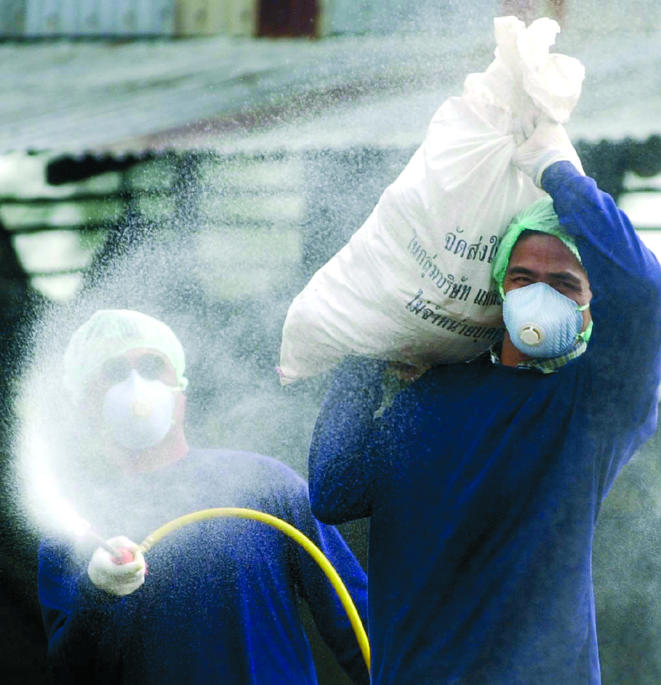The death toll from H5N1 avian influenza in Asia rose to eight earlier this week, as the BMJ went to press. By Tuesday, six people had died in Vietnam and two in Thailand. All but one of those who died were children, and all had had direct contact with infected poultry.
The disease in poultry is spreading across Asia, with Thailand, Cambodia, Indonesia, Pakistan, and Laos announcing outbreaks in addition to Japan, South Korea, and Vietnam. The Chinese authorities also confirmed this week an outbreak of H5N1 avian flu among ducks in the Guangxi Zhuang Autonomous Region. The local government immediately culled 14 000 birds.
As soon as Thailand confirmed an outbreak of bird flu, the European Union, Japan, and many other countries banned Thai chicken imports. Soldiers and prisoners have been drafted in to cull millions of chickens by burying them alive.
A mass cull of chickens is also underway in Vietnam, and the Cambodian government has requested help from the UN Food and Agriculture Organization on how to tackle the disease. The World Health Organization is urging countries affected to cull their chicken populations as the most effective way to stop the spread of the disease.
Peter Cordingley, the WHO's spokesman in Manila, said: “We have serious misgivings about whether the cull will be effective enough to stop the disease in its tracks. Culling is still a priority but the disease is spreading in ways that we don't understand.”
Figure 1.

Workers in Thailand dispose of infected chicken carcasses
Credit: APICHART WEERAWONG/AP
No human cases have so far been reported outside Vietnam and Thailand but WHO expects more cases to emerge in Vietnam and is concerned about the possible spread to countries that have little medical infrastructure. “The cases in Thailand are west of Bangkok, close to the Myanmar [Burma] border. An outbreak in Myanmar or Laos would be a nightmare,” said Mr Cordingley.
There is still no evidence of human to human transmission, but each new human case gives the virus an opportunity to reassort and combine with another flu virus to become transmissible by humans. A vaccine treatment for H5N1 avian flu is at least six months away, said Mr Cordingley.
A meeting in Bangkok to discuss the crisis was planned for Wednesday (28 January), after the BMJ went to press. (See p 238.)


